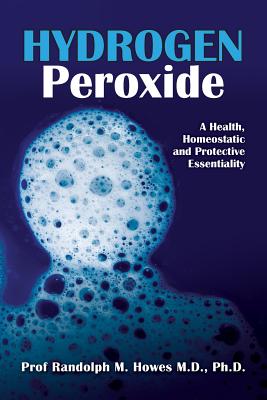Prof Randolph M. Howes, MD, PhD Dr. Howes was born on a small strawberry farm East of Ponchatoula, Louisiana. He attended Southeastern Louisiana University (SLU) and was honored as a SLU Legend, and as an Outstanding SLU Alumnus, along with Robin Roberts of ABC News Good Morning America. SLU articles referred to him as "a da Vinci in cowboy boots." While working on double doctorate degrees at Tulane University School of Medicine, Dr. Howes worked as a technician on the isolation of thyrotropin releasing factor with Nobel Laureate, Dr. Andrew V. Schally, studied under Dr. Richard Steele, whose mentor was Nobel Laureate, Dr. Albert Szent Gyorgii, met Nobel Laureates, George Wald and Dr. Linus Pauling, who felt that Dr. Howes could help bridge the gap between physicians and scientists. Later, he was also a friends of Nobel laureate, Lou Ignarro and the late Dr. Fritz Lipmann. He was the first in the history of Tulane School of Medicine to receive double doctorate degrees in medicine and biochemistry simultaneously. He was the first to be designated by the late Dr. Theodore Drapanas as a trained "surgical scientist" at Tulane Medical School. During his surgery residency at Johns Hopkins Hospital, Dr. George Zuidema, Chief and Blalock Professor of Surgery, gave him permission to conduct research studies concurrent with his surgical training in the highly sought after William Stewart Halstead Surgery program. He was granted lab space by Dr. John Cameron, past president of the American Surgical Association, and he wrote many papers on surgical and oxygen free radical subjects during his residency training. He was the first to complete board eligibility in both general and plastic surgery at The Johns Hopkins Hospital, while doing basic research on oxygen metabolism, all in a six-year period. He had the opportunity to work with the pioneer of mitochondrial biochemical function, Dr. Albert L. Lehninger. Dr. Howes invented the triple lumen venous catheter, which has been credited with helping save the lives of over 20 million critically ill patients worldwide. His catheter is the number one venous catheter in the world and his name is well recognized in over 100 countries. He received the Harper Award from the American College for Advancement in Medicine, served as their keynote speaker. In 2013, he was the first to be awarded the Charles Farr award for "excellence in oxidative medicine" by the American College for Advancement in Medicine.











